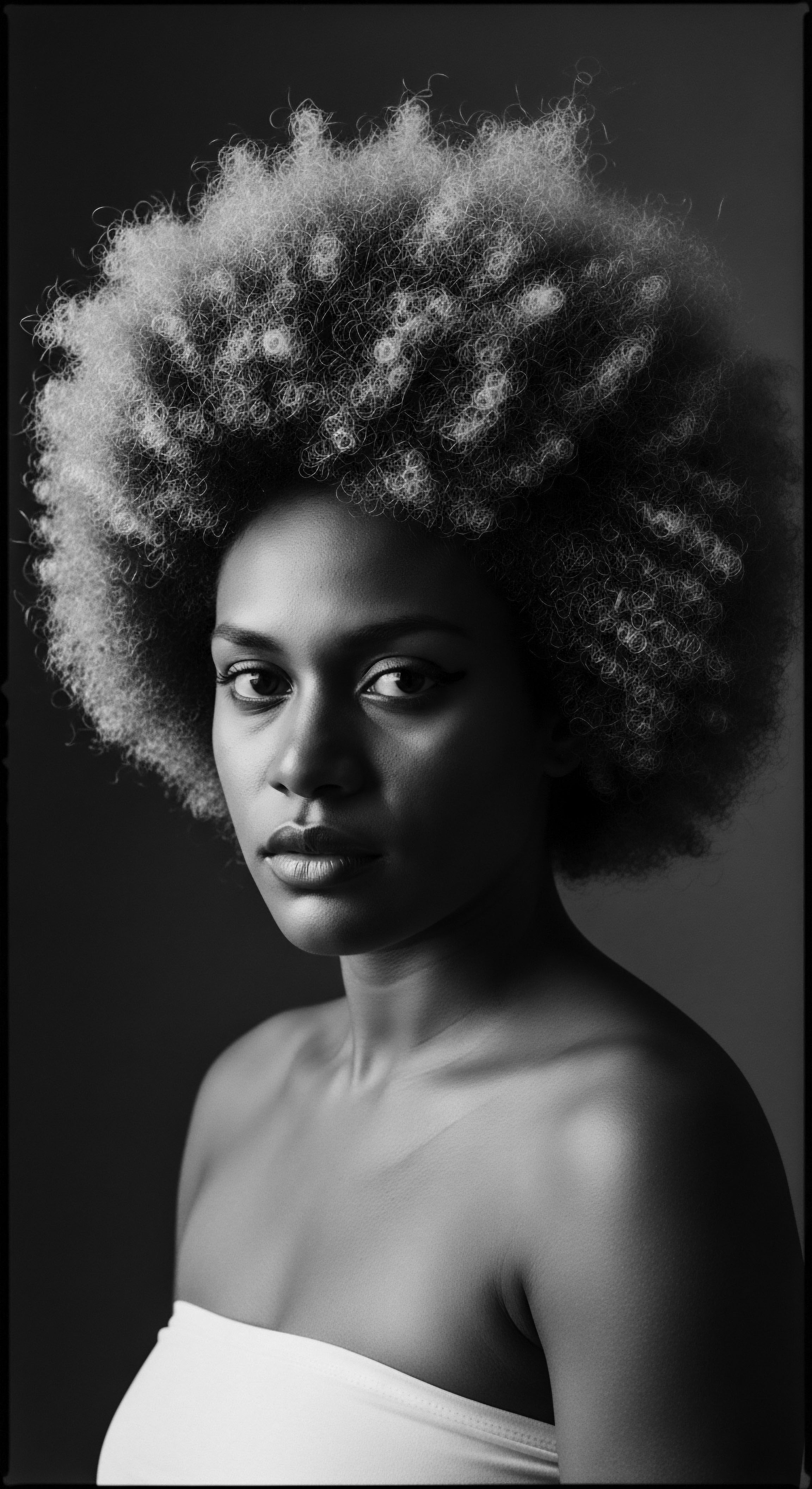
Fundamentals
The notion of Well-being, within the profound tapestry of Roothea’s ‘living library,’ transcends a mere state of contentment or physical health. It is an expansive concept, a deep resonance of harmony that extends beyond the individual, encompassing ancestral connections, community vitality, and the very essence of one’s heritage. To grasp its initial meaning, consider Well-being as the holistic flourishing of a person, where all aspects of their being—physical, mental, emotional, social, and spiritual—are in balanced alignment, fostering a vibrant existence. This definition is not static; it is a dynamic interplay, particularly when viewed through the lens of textured hair heritage, where history and identity are inextricably linked to daily practices and collective narratives.
At its simplest, Well-being refers to how life is unfolding for an individual, measuring the quality of their experience. This quality, for those with textured hair, has historically been shaped by far more than personal choice; it has been influenced by societal perceptions, cultural pressures, and the enduring legacy of ancestral practices. The interpretation of Well-being, therefore, becomes a journey through time, a recognition of how care for one’s hair has always been a barometer of inner and communal strength.
Well-being, in the context of textured hair heritage, signifies a harmonious flourishing of self, deeply connected to ancestral practices and communal vitality.
The initial understanding of Well-being, particularly in Black and mixed-race communities, begins with acknowledging hair as a profound marker of identity. In many African societies, hair was not simply an adornment; it was a complex language system, communicating social status, age, marital standing, ethnic identity, wealth, and even one’s surname. This historical significance underscores that Well-being, for those of African descent, has always been intertwined with the ability to express and honor one’s hair without prejudice or imposition. The care rituals, the styles, the very texture of the hair, were all elements of a larger, collective Well-being.
For centuries, traditional African hair care routines have been rooted in natural ingredients and techniques passed down through generations, prioritizing moisture and scalp health. This ancestral wisdom forms a foundational layer of Well-being, reflecting a deep connection to the earth and a reliance on its bounty for sustenance and beauty. The practices themselves, such as communal braiding sessions, fostered social bonds and preserved cultural identity, illustrating that Well-being was a shared endeavor, not an isolated pursuit.
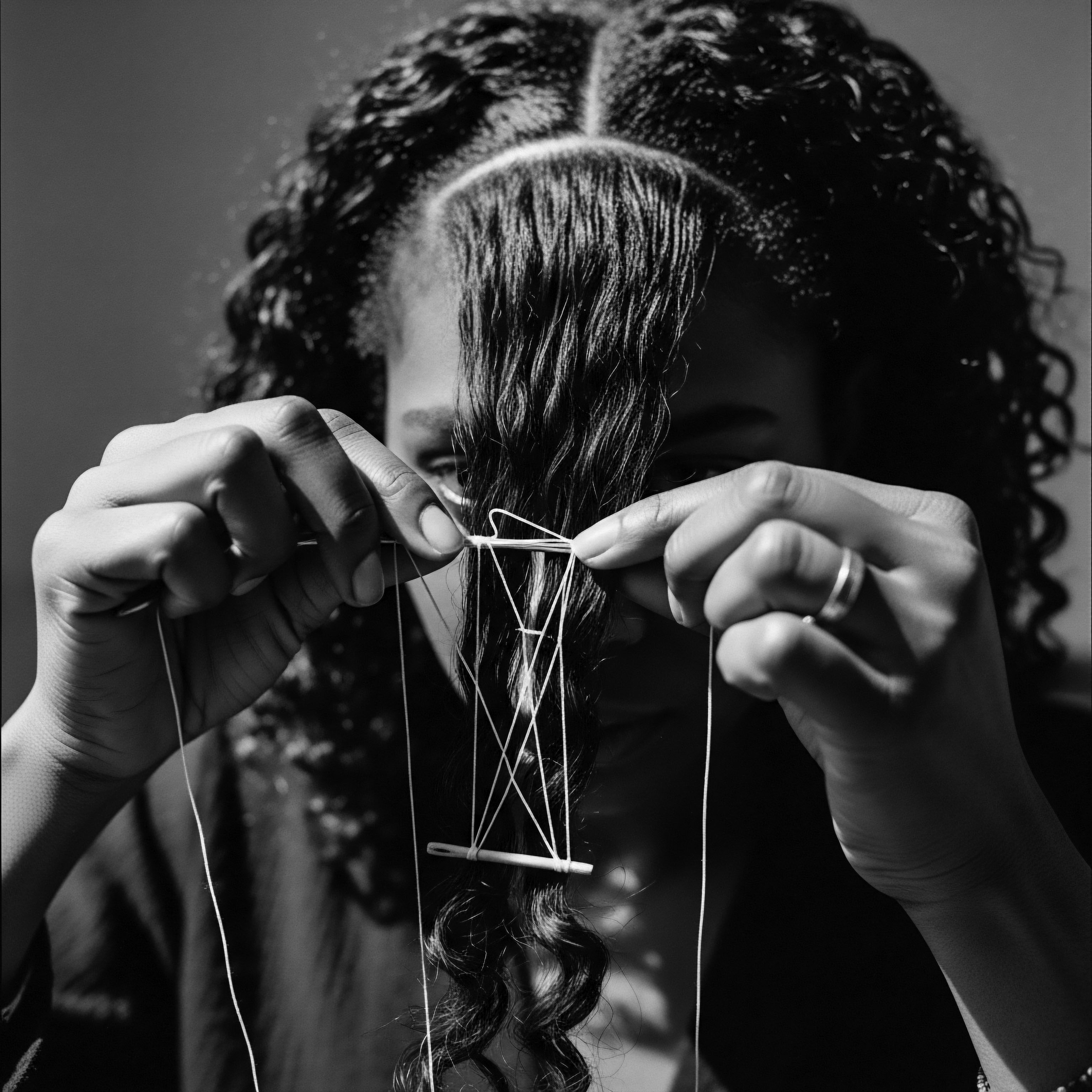
The Echoes of Ancestral Care
The heritage of textured hair care reveals that Well-being was often intrinsically linked to the land and its offerings. Communities across Africa utilized a diverse array of plants for hair and skin health. For instance, in Afar, Northeastern Ethiopia, a study identified 17 plant species traditionally used for hair and skin care, with Ziziphus Spina-Christi (L.) Willd. and Sesamum Orientale L.
being among the most preferred for cleansing and styling. These botanical traditions speak to a deep, inherent knowledge of how natural elements contribute to overall vitality. The application of pounded leaves, oils, and butters was not merely cosmetic; it was a ritual of self-preservation and communal connection.
Consider the practice of hair wrapping, a tradition passed down through generations in certain communities. In African villages, these wraps, adorned with different prints and colors, symbolized a person’s tribe or their status within society. Beyond their symbolic meaning, hair wraps also served a practical purpose, helping to keep hair healthy and guard against environmental damage. This blend of aesthetic, symbolic, and practical application illustrates a comprehensive approach to Well-being that respected both the physical and cultural dimensions of hair.
- Shea Butter ❉ A revered natural ingredient, widely used across Africa to nourish and protect textured hair, highlighting ancestral reliance on natural remedies.
- Coconut Oil ❉ Another staple in traditional hair care, offering deep moisture and promoting scalp health, embodying the wisdom of indigenous plant knowledge.
- Aloe Vera ❉ Utilized for its soothing and moisturizing properties, showcasing the enduring efficacy of natural botanicals in hair wellness.
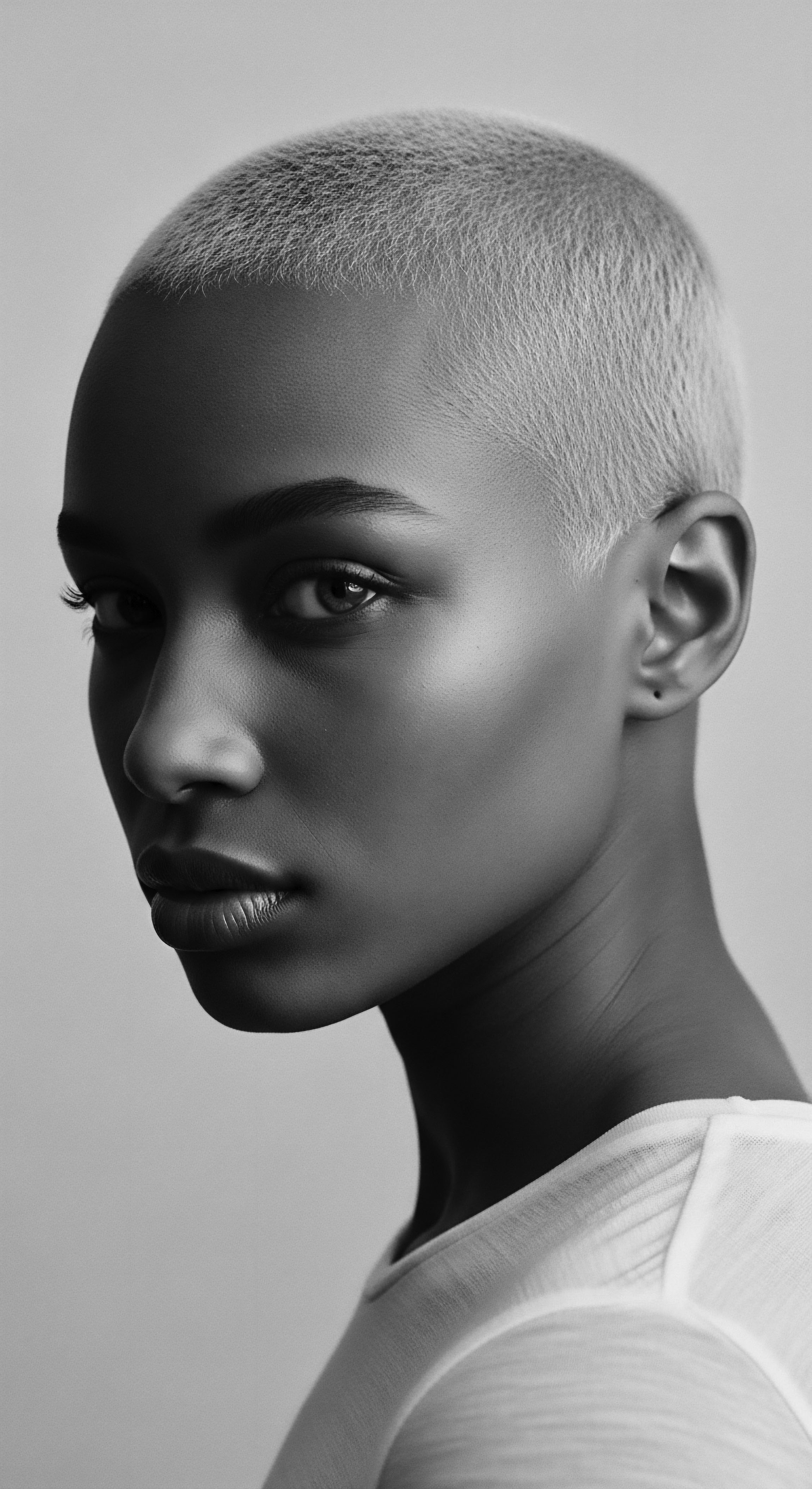
Intermediate
Expanding upon its fundamental meaning, Well-being, when observed through the historical lens of textured hair, transforms into a complex interplay of personal identity, communal resilience, and socio-political struggle. This interpretation extends beyond individual contentment, encompassing the collective journey of Black and mixed-race communities in defining and affirming their beauty and self-worth. The concept here is not merely about feeling good; it is about the sustained ability to thrive in the face of historical adversity, to find strength in ancestral practices, and to express one’s authentic self through the crowning glory of hair.
For Black women, hair is inextricably linked to cultural identity, spirituality, character, and notions of beauty. The historical trajectory of textured hair, particularly within the African diaspora, reveals a continuous negotiation between inherited traditions and imposed standards. This negotiation directly impacts Well-being, as the pressure to conform to Eurocentric beauty ideals has historically led to practices that could cause physical damage to hair and psychological distress.
The journey of Well-being for textured hair is a testament to resilience, a narrative of reclaiming ancestral beauty in the face of societal pressures.
The legacy of slavery, racism, and white supremacy has exerted lasting negative effects on Black identity, often devaluing African physical features, including hair. Historically, hair was often shaved or altered as a means of control during slavery, yet braiding persisted as a quiet act of resistance and preservation of African identity. This historical context illuminates how the very act of maintaining textured hair, in its natural state or through traditional styles, has been a profound declaration of Well-being—a refusal to relinquish a vital aspect of self and heritage.
The mid-20th century saw a powerful resurgence of natural hairstyles, with the Afro becoming a symbol of Black pride and resistance during the Civil Rights Movement. This period marked a significant shift in the collective understanding of Well-being, as embracing natural hair became a political statement of consciousness, color, and culture. It was a reclaiming of self, a declaration that “Black is beautiful,” which profoundly influenced the psychological Well-being of individuals and communities.
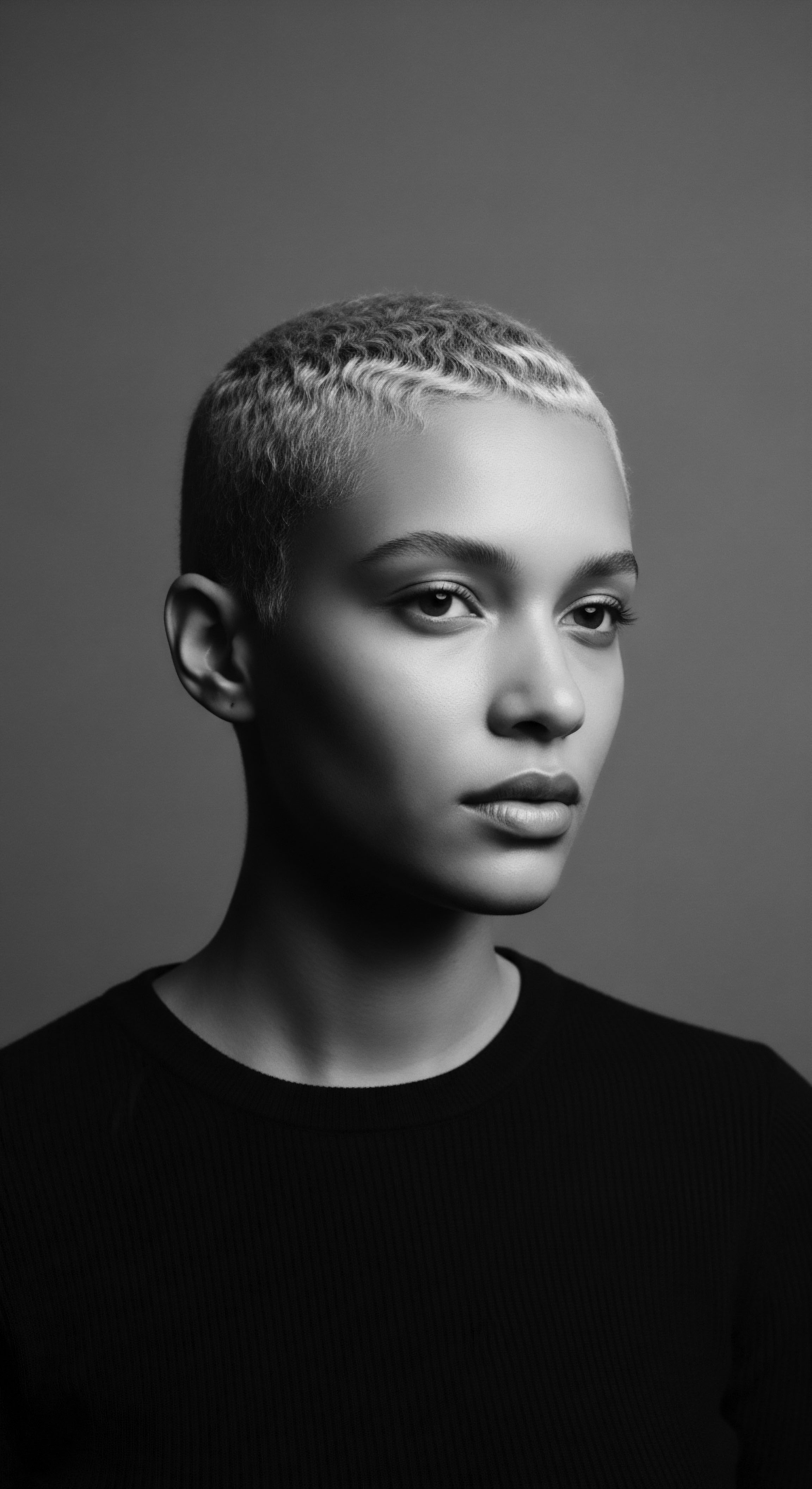
The Tender Thread of Community and Care
Hair care, for many in the Black community, is not merely a solitary act; it is a communal activity, a space for shared stories, support, and the transmission of ancestral knowledge. The rituals of grooming often provide a sense of belonging and connection, reinforcing social Well-being. This communal aspect is a direct inheritance from African traditions, where braiding sessions were opportunities for mothers, daughters, and friends to gather, strengthening bonds while preserving cultural identity.
Consider the detailed account by Jacobs-Huey (2006) in From the Kitchen to the Parlor ❉ Language and Becoming in African American Women’s Hair Care, which provides an ethnographic look at how African American women use both hair itself and language about hair as cultural resources to shape their self-perception. This scholarly work reveals how hair care spaces, like beauty salons, serve as sites for negotiating identity and reinforcing communal ties, contributing significantly to a nuanced understanding of Well-being within this heritage. The conversations, the shared experiences, and the collective wisdom exchanged in these spaces underscore the profound social dimension of hair care.
| Historical Practice Communal Braiding ❉ Ancient African practice for social bonding and identity. |
| Modern/Contemporary Link to Well-Being Natural Hair Movement Gatherings ❉ Online and in-person communities sharing care tips and affirming identity, fostering social and emotional Well-being. |
| Historical Practice Use of Natural Botanicals ❉ Reliance on shea butter, coconut oil, and other plants for hair health. |
| Modern/Contemporary Link to Well-Being Clean Beauty Movement ❉ Increased demand for plant-based, chemical-free products, aligning with traditional wisdom and physical Well-being. |
| Historical Practice Hair as Communication ❉ Styles indicating social status, marital status, or tribal affiliation. |
| Modern/Contemporary Link to Well-Being Hair as Self-Expression ❉ Diverse textured styles as a statement of pride, individuality, and cultural connection, contributing to psychological Well-being. |
| Historical Practice These interwoven threads demonstrate the enduring significance of hair practices in shaping the holistic Well-being of Black and mixed-race communities across generations. |
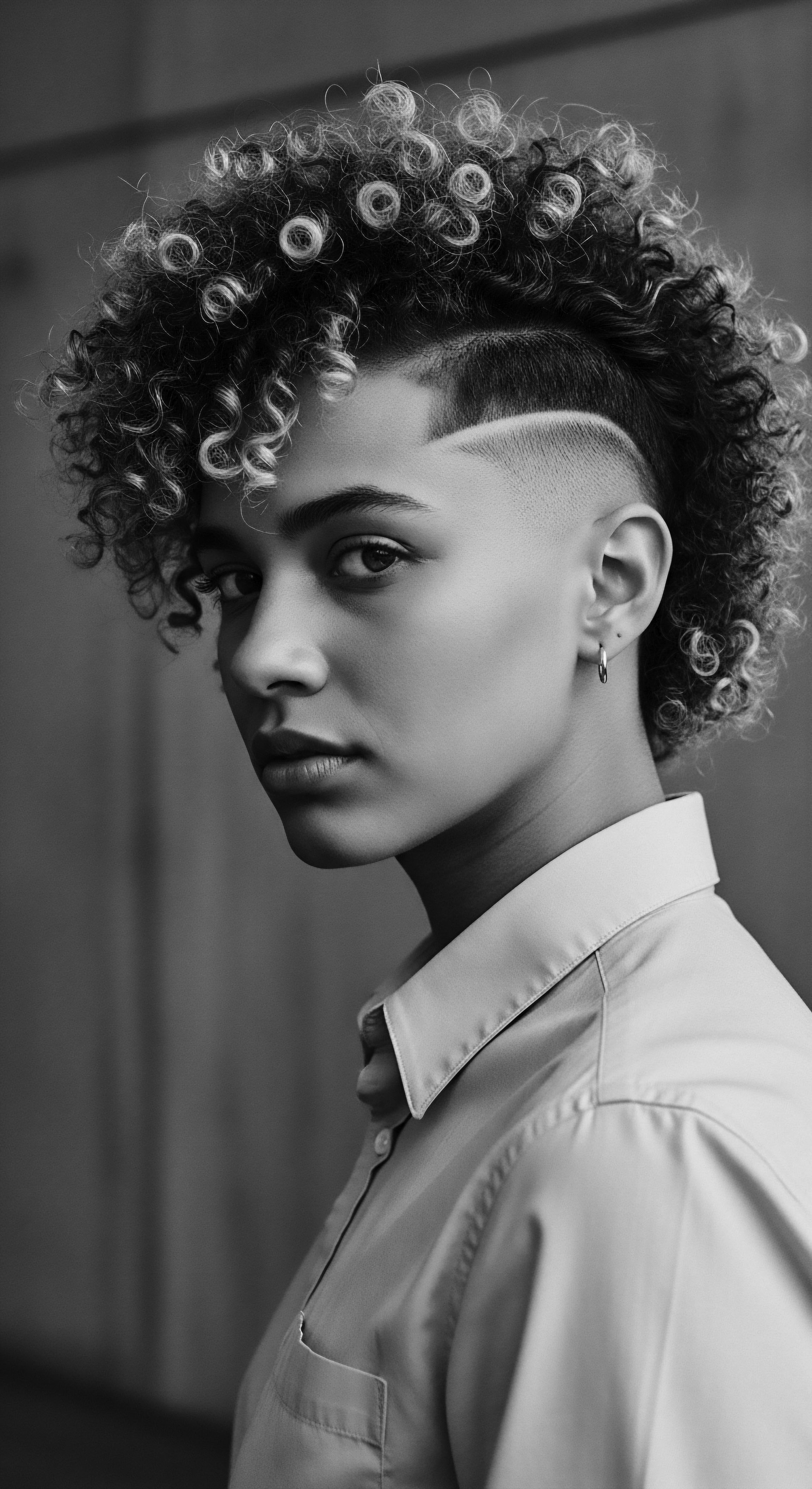
Academic
Well-being, from an academic perspective rooted in the rich heritage of textured hair, represents a dynamic and multifaceted state of flourishing, characterized by the intricate interplay of biological resilience, deeply embedded cultural meaning, and the continuous negotiation of identity within societal structures. It is not merely the absence of distress but the active cultivation of personal and communal vitality, informed by ancestral wisdom and sustained through conscious practice. This comprehensive delineation moves beyond simplistic definitions, recognizing Well-being as a profound outcome of historical agency, cultural affirmation, and the embodied experience of textured hair. The term encapsulates the significance of self-acceptance, the intention behind care rituals, the connotation of hair as a symbol of resistance, and the very essence of human dignity.
The scholarly examination of Well-being within this context necessitates a deep understanding of its interconnected incidences across various fields, particularly anthropology, sociology, psychology, and ethnobotany. It recognizes that for individuals with textured hair, the experience of Well-being is inherently shaped by a legacy of both celebration and subjugation. The meaning of hair, therefore, becomes a powerful locus for exploring the human condition, where biological attributes are imbued with profound cultural and political weight.
One compelling area for in-depth analysis centers on the psychological and social ramifications of hair-based discrimination and the subsequent movements for natural hair acceptance. The devaluation of African physical features, including hair, historically led to internalized negative self-perceptions within Black communities. This complex phenomenon, where straight, Eurocentric hair was deemed “good” and tightly coiled hair “bad,” created a significant psychological burden. The struggle for hair acceptance is not merely aesthetic; it is a battle for belonging, self-worth, and mental equilibrium.
Academic inquiry into Well-being for textured hair unveils a complex interplay of historical resilience, cultural meaning, and the psychological impact of societal perceptions.
A specific historical example powerfully illuminates this connection ❉ the persistent pressure on Black women to chemically straighten their hair to avoid discrimination in schools and workplaces. Research indicates that Black women, in particular, often felt compelled to chemically alter their hair to conform to Eurocentric beauty standards, a process that could lead to hair damage and loss. This pressure is not a relic of the past; institutional bias against Black hairstyles continues to exist today, impacting professional and academic spaces. The very act of choosing to wear one’s natural hair, therefore, becomes a profound act of self-affirmation and a declaration of Well-being, challenging deeply entrenched societal norms.
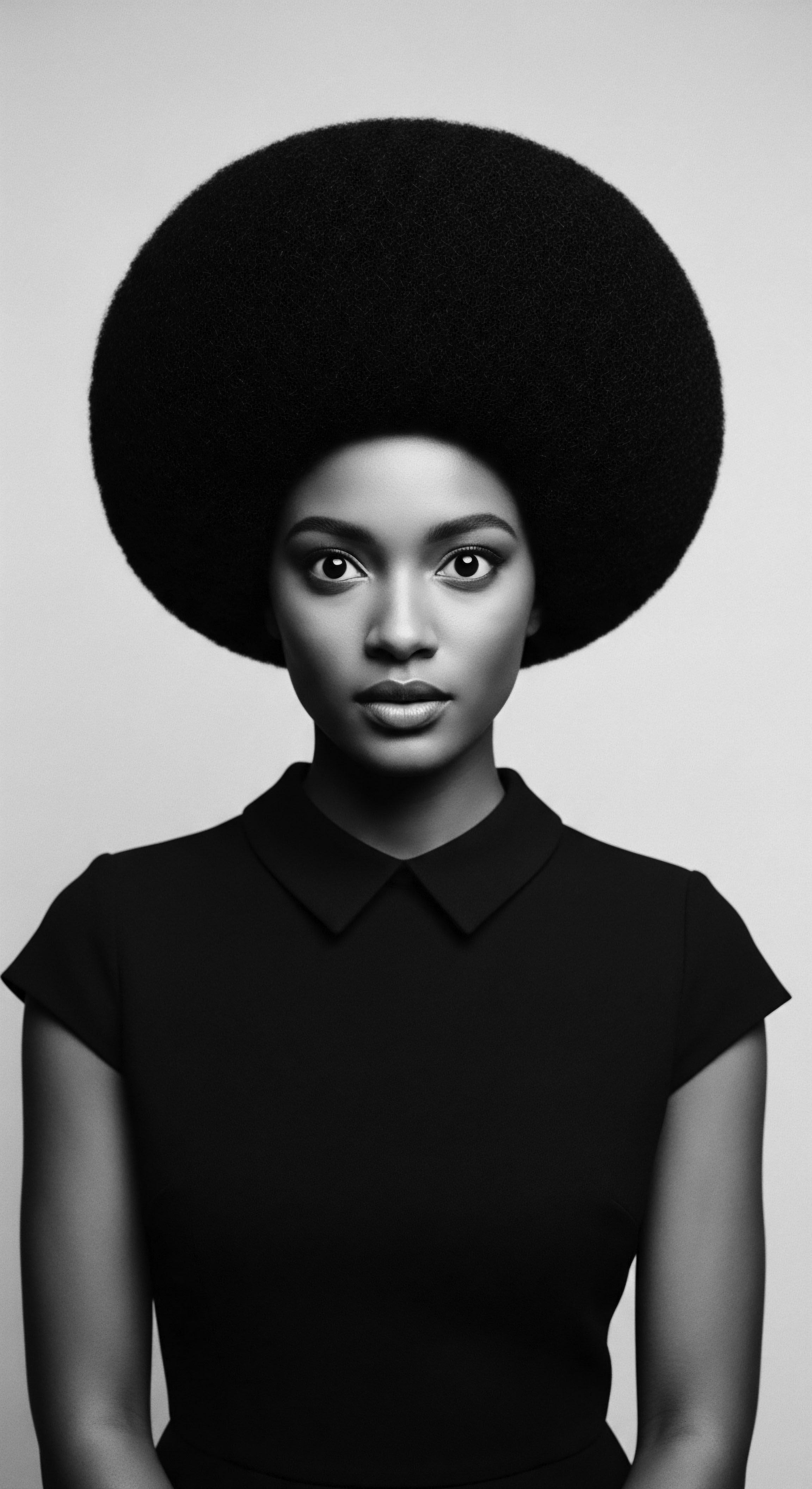
The Unbound Helix ❉ Hair as a Site of Resistance and Identity
The historical and ongoing struggles surrounding textured hair underscore a critical dimension of Well-being ❉ the freedom to embody one’s identity without fear of prejudice. For people of African descent, hair has served as a potent symbol of resistance and cultural continuity, even during periods of extreme oppression. During the transatlantic slave trade, enslaved African women braided rice seeds into their hair as a means of survival, preserving not only sustenance but also a vital connection to their homeland and heritage. Furthermore, cornrows were ingeniously used to create maps, guiding enslaved individuals to freedom—a powerful testament to hair as a tool of defiance and liberation.
The academic discourse surrounding textured hair and Well-being often highlights the concept of “hair journeys” within the Black community. These personal narratives, often marked by struggles to embrace natural textures, illustrate the emotional significance of hair in cultural identity. A study by Dove and Powers (2018) emphasized that for African American female adolescents, hair and hair care are critical areas for socialization and support, demonstrating how young people view hair as very important to their Well-being and sense of self. This finding speaks to the deep psychological roots of hair in identity formation and its direct impact on subjective Well-being.
The cultural meaning of textured hair extends to its spiritual connotations. In ancient African societies, hair was believed to contain a person’s spirit, holding enough power to be used in rituals for protection or healing. This spiritual dimension adds another layer to the understanding of Well-being, suggesting that care for textured hair is not merely physical maintenance but a reverence for the spiritual essence it embodies. The preservation of these ancestral beliefs, even in modern contexts, contributes to a holistic sense of Well-being that transcends the purely material.
The biological uniqueness of textured hair, with its tightly coiled structure, presents specific care considerations. This biological reality, combined with historical and societal pressures, has led to a unique set of challenges and innovations in hair care. The exploration of Well-being for textured hair, therefore, requires a scientific understanding of its properties alongside a deep appreciation for its cultural context.
For instance, the traditional use of natural oils and butters for moisture and protection, often dismissed by some modern approaches, finds validation in the inherent dryness of textured hair. This blend of scientific understanding and ancestral wisdom forms the bedrock of Roothea’s approach to Well-being.
The very definition of Well-being for textured hair communities is a continuous evolution, shaped by ongoing social and political movements. The contemporary natural hair movement, amplified by social media, has created global communities where individuals share knowledge, offer support, and celebrate their authentic textures. This collective affirmation contributes significantly to psychological Well-being, counteracting historical narratives of inferiority and fostering a sense of pride. The movement highlights how Well-being is not a static state but a dynamic process of reclamation and celebration, where every coil and kink is a statement of self-acceptance and ancestral connection.
The impact of hair appearance and texture on an individual’s Well-being begins from a young age. Studies indicate that girls with textured hair, as young as 10-15 years old in the US, have reported experiencing teasing or bullying related to their hair. This early exposure to hair-based discrimination can have lasting effects on self-perception and mental health, underscoring the urgent need for culturally responsive approaches to Well-being that address these systemic issues. The pursuit of Well-being, therefore, becomes an act of advocating for equitable spaces where all hair textures are celebrated and respected.
Moreover, the economic implications of hair care within Black and mixed-race communities are significant. The industry surrounding textured hair care is a multi-billion dollar enterprise, reflecting both the demand for specialized products and the historical exclusion from mainstream beauty markets. Understanding Well-being in this context also means recognizing the economic empowerment that can arise from supporting Black-owned businesses and advocating for inclusive product development that honors the unique needs of textured hair. This economic dimension contributes to community Well-being, fostering self-sufficiency and collective prosperity.
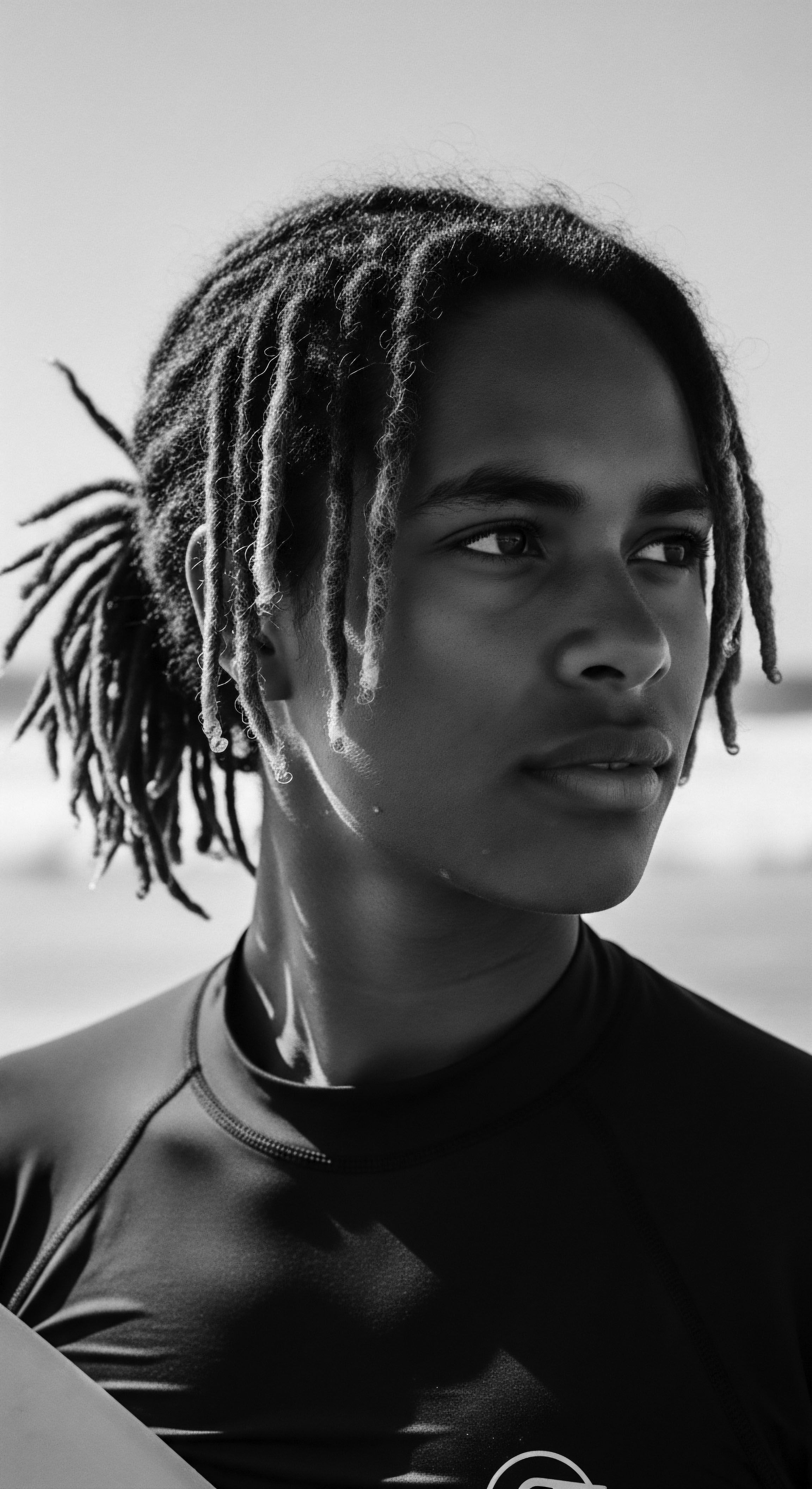
Reflection on the Heritage of Well-Being
As we close this contemplation on Well-being, particularly as it breathes through the strands of textured hair, we sense a profound continuum—an unbroken lineage stretching from elemental biology to the vibrant expressions of identity that shape our present and future. The Soul of a Strand ethos reminds us that Well-being is not a fleeting sensation but a deeply rooted experience, echoing the wisdom of those who came before us. Each coil, every twist, holds a story of resilience, a testament to enduring spirit that transcends generations.
The journey of textured hair through time is a powerful metaphor for the human experience of Well-being itself. It is a story of adaptation, of finding nourishment in the earth’s embrace, and of maintaining connection even when forces sought to sever it. The ancient rituals of hair care, the communal gatherings, and the symbolic language woven into each style were not merely practices; they were expressions of a holistic Well-being, where physical care was inseparable from spiritual grounding and social cohesion. These traditions remind us that true Well-being blossoms when we honor our roots, both literal and metaphorical.
The enduring significance of textured hair in Black and mixed-race communities serves as a living archive of Well-being. It is a testament to the power of cultural memory, a celebration of ancestral ingenuity that transformed everyday acts of grooming into profound statements of self-worth and collective strength. The journey from historical oppression to contemporary celebration reveals that Well-being is an active, ongoing process of reclaiming narratives, affirming identity, and fostering environments where every strand can flourish in its authentic glory. This profound meditation on hair, heritage, and care is an invitation to recognize Well-being not as a destination, but as the continuous, vibrant dance of our ancestral spirit in the present moment.
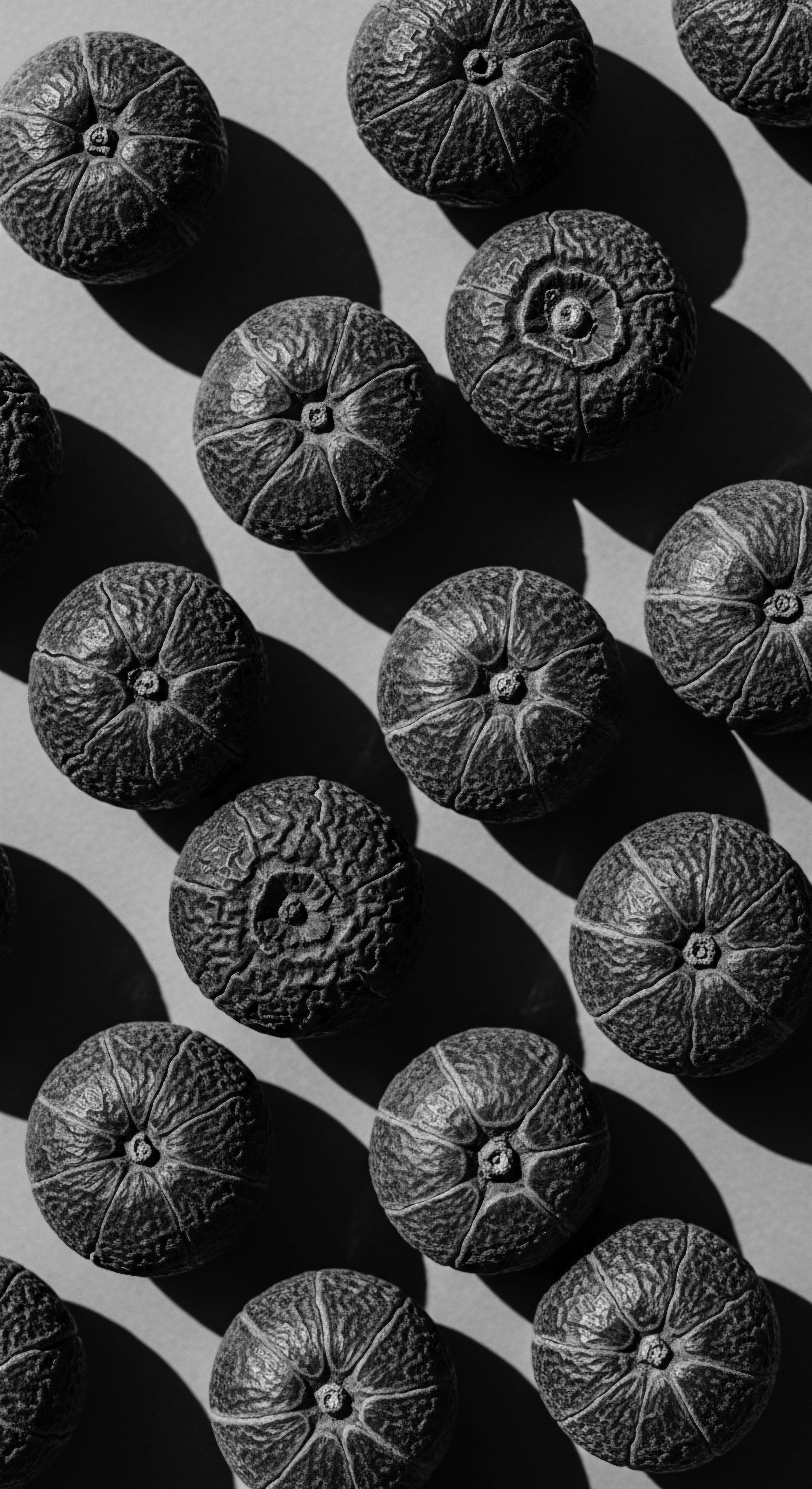
References
- Byrd, A. D. & Tharps, L. L. (2014). Hair Story ❉ Untangling the Roots of Black Hair in America. St. Martin’s Press.
- Dabiri, E. (2019). Twisted ❉ The Tangled History of Black Hair Culture. HarperCollins.
- Jacobs-Huey, L. (2006). From the Kitchen to the Parlor ❉ Language and Becoming in African American Women’s Hair Care. Oxford University Press.
- Khumalo, N. P. et al. (2010). ‘Relaxers’ damage hair ❉ Evidence from amino acid analysis. Journal of the American Academy of Dermatology, 62, 402–8.
- Maharaj, C. (2025). Beyond the roots ❉ exploring the link between black hair and mental health. Mental Health Awareness Week 2025 Blog, TRIYBE .
- Nchinech, N. et al. (2023). Plants Use in the Care and Management of Afro-Textured Hair ❉ A Survey of 100 Participants. Scholars Journal of Applied Medical Sciences, 11(11), 1984-1988.
- Nyela, O. (2021). Braided Archives ❉ Black hair as a site of diasporic transindividuation. York University.
- Omotos, A. (2018). The Cultural Significance of Hair in Ancient African Civilizations. Journal of Pan African Studies .
- Russo, E. T. et al. (2018). Hair loss and quality of life ❉ A systematic review. Journal of the American Academy of Dermatology, 79(6), 1088-1097.
- Weitz, R. (2004). Rapunzel’s Daughters ❉ What Women’s Hair Tells Us about Women’s Lives. Farrar, Straus and Giroux.
